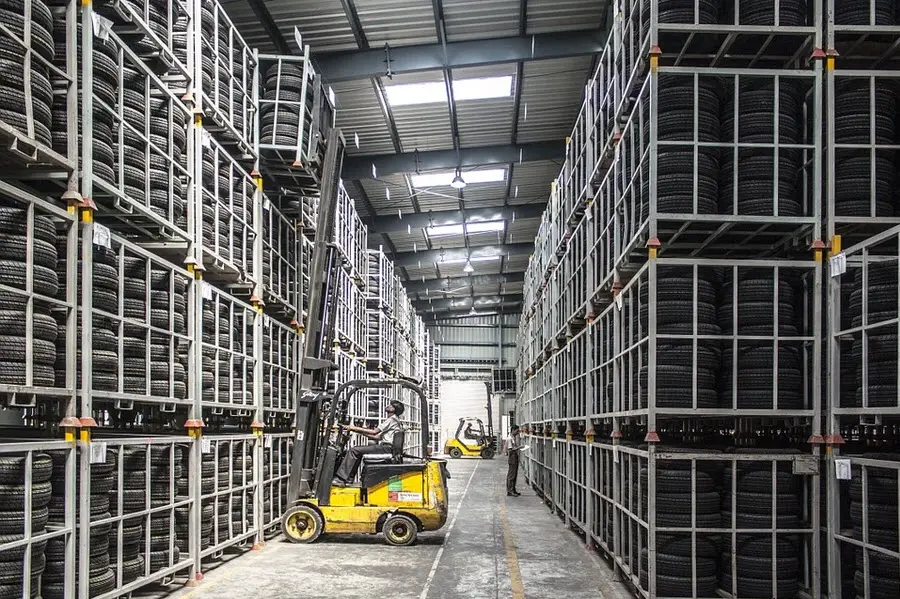The modern warehouse is almost always full of material goods, whether it is finished products, raw materials, or supplies. When these goods are purchased in bulk they need to be stored somewhere until they’re needed either by the customers or for manufacturing purposes. For this reason, warehouses have developed into their own niche market within the logistics industry. Quality assurance, inventory management, team motivation, and statistical analysis are the primary concerns that warehouse managers face on a daily basis.
Page Table of Contents
1. Invest In Software
Dealing in physical goods has always been an incredibly resource-intensive process, however, with the addition of technology warehouses have become far more efficient.
Managers used to be required to do the work of computers by tracking all inventory manually. This often led to costly mistakes and an overall inefficient process. As technology became more affordable, having a warehouse management system has become a necessity for any warehouse seeking to keep up with the competition. It equips managers with the ability to keep track of every piece of inventory and ensure that they meet all regulations for warehousing and quality control in a timely fashion with an easy-to-use interface.
Saving time allows managers to spend it bettering their warehouse. It is possible for employees to find more ways to save time that would be of benefit to the entire workflow since they are able to track everything without having any blind spots.
2. Motivate Your Team
A warehouse can never operate at maximum potential when employees are unhappy. A motivated team is an efficient team, which leads to higher productivity and less stress on everyone involved.
Managers must ensure that all employees understand what they’re doing and why it’s important. Employees should be held accountable for their actions and industrial standards need to be set. Employees are more productive when they understand their roles in the system and they are able to take ownership of their actions.
This is especially true in manual labor positions, which are often the most common positions in warehouses. Paying employees well will go a long way towards motivating them to work harder since it shows that they’re valued as a crucial cog in the machine.
3. Track Your System With Statistics
Statistics are a clever way to look at data and determine trends that would otherwise be hard to see since the numbers can tell a story all on their own.
Warehouse managers need to take advantage of this fact by tracking everything from inventory levels, employee performance, equipment use, and even the inefficiencies of specific areas. Once you have a clear idea of what is working in your system you can modify it to make room for changes that need to be made. If you understand where there are problems in the system, then ways may be devised to fix them since it will be easier to set goals that are actually attainable.
Having a warehouse that is constantly improving itself through data allows for a better work environment and maximizes the potential that every single employee has at their disposal.
4. Invest In Equipment
It’s no secret that having the right equipment on hand speeds up an operation, but many managers neglect to think of their warehouse in this way. Warehouse equipment is here for a reason and it needs to be taken care of properly so that it never fails when needed most. This can save precious time and money, which both have a direct effect on the bottom line of your warehouse.
From forklifts to the mini-loaders that sort incoming goods, having enough equipment to support growth is vital to any warehouse. Safety is also a concern when it comes to equipment. Because workers are moving heavy objects around in the same place every day, there is an increased risk of injury if precautions aren’t taken.
5. Set Clear Roles
It can be easy to assume that everyone is on the same page in a warehouse environment, but this often leads to confusion and frustration down the line. A rigid management structure with rules and regulations worked into it ensures that every employee has minimum standards that they must meet. This is vital when dealing with new hires since these standards must be set in stone from the beginning. By establishing a hierarchy and setting clear boundaries, employees will operate more efficiently since it’s easier for them to know exactly what is expected of them on a daily basis.

Warehouses are an integral part of any business that deals with the shipment of goods. Constantly improving them is essential to keeping up with the ever-growing demands of consumers. By using data and motivation, managers can lead their team towards an operation that meets all of its goals successfully. Find out what works for your warehouse and what doesn’t so that you can establish a plan of action before problems arise. Having all the information at hand is the first step to success.



